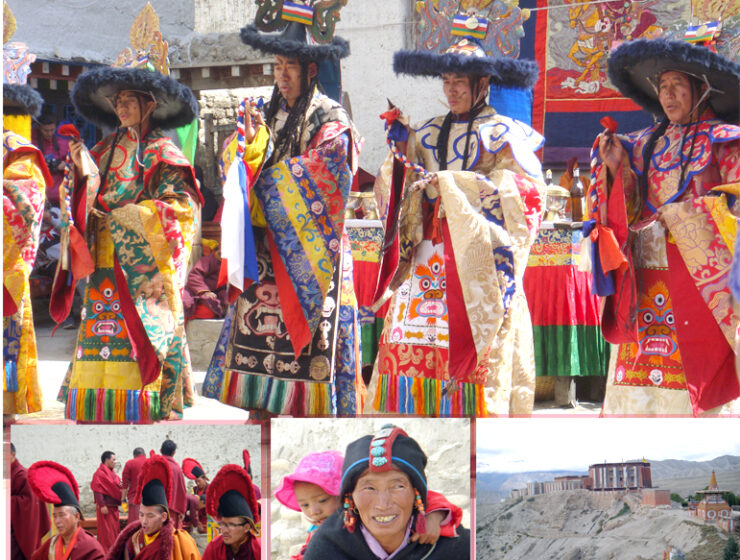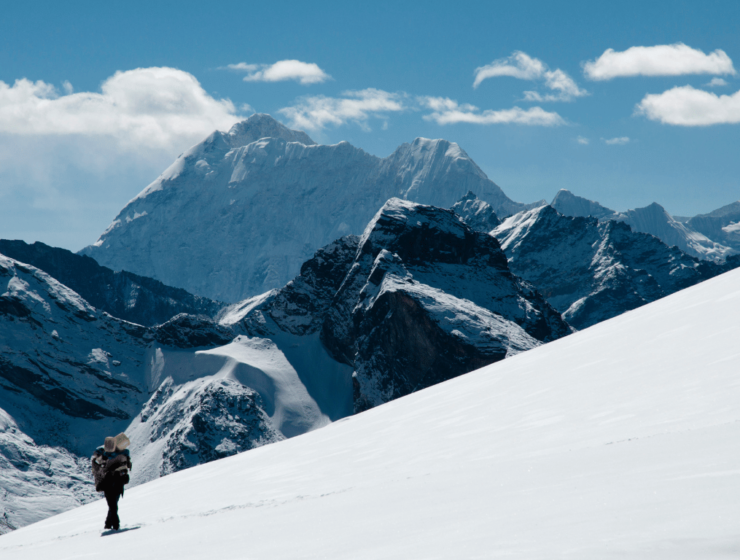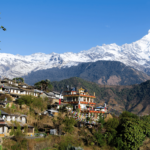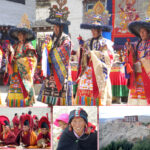Ecotourism is very burning issue and one of the fastest growing sectors in current world tourism industry. Especially in many developing countries like Nepal are trying to use ecotourism as a tool to achieve sustainable development. The paper mainly considers current opportunities of ecotourism in Nepal where tourism is one of the fastest expanding industries which has been leaving various negative impacts in different areas. It is aiming to study about the current state of ecotourism in Nepal. The paper also attempt to give critical analysis of ecotourism impacts and challenges in the case of Nepal and point out some recommendations for better practice of ecotourism. The paper tries to answer the following question: Is ecotourism opportunity or challenge in Nepal? How is ecotourism practised in the country? Can ecotourism be a beneficial tool for sustainable development of the country? How can ecotourism be very effective means of development and conservation?
Nepal has abundance of opportunities of ecotourism industry. But its effective practice and implementation is not promising due to lack of commitment of governmental policy and planning strategy with combination of integrated conservation and development. Thus to run ecotourism project properly, principles and theories of ecotourism must be considered a major base while make its policy and planning. Policy must be integrative, collaborative and comprehensive to achieve real outcome of ecotourism by realizing importance of environmental, social and economic imperatives.
Principal Tourist Activities in Nepal
Nepal is a playground for tourists with different activities which are described briefly bellow:
Rural Tourism: Nepal is a rural village based country where majority of people are residing in remote, very remote villages with various ethnicities where tourists can get a real sense of the unique life style and culture. Also village tourism supports different significant activities such as forestation, transformation of agriculture, conservation, income generation, exchange of culture and knowledge etc. (NTB, 2008).
Mountain Climbing: Nepal is famous for its unique mountain landscape which is the reason that many tourists to visit Nepal. Out of 1792 mountain peaks, as many as 1310 are above 6000 metre high, but only 326 peaks are open for climbing (TAAN, 2008).
Trekking: Nepal also possesses wonderful trekking destinations with beautiful scenic vistas that attract tourists more and convince them to stay more days.
Visiting Religious and Cultural Sites: Nepal has many important religious and cultural sites with historic and artistic significance particularly in Hinduism and Buddhism.
UNESCO has listed ten cultural and religious sites of Nepal as World Heritage Sites (NTB, 2008).
Rafting: In Nepal, there are numerous rivers, among which some are very fast flowing rivers which are excellent for rafting purposes. Through rafting tourists can also explore the natural and cultural beauty of the country.
Bungee Jumping: Nepal has many thrilling Bungee jumping sites that provide tourists with great adventurous experiences with fun in life. Bhote Koshi site is the main site for these activities.
Besides these, there are so many other activities, such as rock climbing, mountain biking, jungle safaris, paragliding, hot air ballooning, mountain flights, visiting museums, shopping indigenous products, meditation, etc. These activities are more or less related with ecotourism in the form of nature, wildlife and culture based tourism. However the proper management of all activities is always remain major consideration for effective practice of ecotourism in Nepal.
Besides various benefits of tourism, tourism also has severe adverse effects such as unwanted pressure on natural resources, environmental pollution, loss of natural habitats and deterioration of natural vista, depletion of water resources, cultural erosion, and increases use of drugs and growth of criminal activities. So tourism needs to be developed while embracing the twin goals of local development and environmental conservation. In this point, ecotourism could be a tool to curb or check the adverse effects of the mass tourism. The tourism industry in Nepal also eventually has adopted the principles of ecotourism as its key issues in developing responsible and advantageous tourism in the country.
Efforts of Ecotourism Development in Nepal
From above mentioned trends of tourism growth in Nepal it is easy to speculate that tourism in Nepal is gradually heading towards mass tourism. So it seems the right time to implement the principles of ecotourism in the growing field of tourism so that it can help to conserve natural ecosystems and promote local culture while protecting generation old cultural and religious heritages by curbing the fast growth of tourism. Ecotourism could provide maximum benefits for local communities with environmental conservation through maximum involvement of all stakeholders of the tourism industry to aware the need of ecotourism as a responsible tourism to promote balance development in the country.
It is no doubt that proper use of ecotourism can be very beneficial in various aspects. Nepal is blessed with various resources for attracting tourists in different ways. These resources need to be utilized properly, and ecotourism can be the best vehicle to deliver socio-economic enhancement of remote and rural areas and also to safeguard the environment of host community.
Nepal has long experienced the need of ecotourism since there has been an increased flow of tourists and its adverse impacts started to be felt different fields. So Nepal aims to develop ecotourism as a key vehicle supported by different national and international agencies focusing in environmental conservation and poverty alleviation. There are various national and international organizations such a Department of National Parks and Wildlife Conservation (DNPWC), World Wildlife Fund (WWF) and King Mahendra Trust for Nature Conservation (KMTNC) mainly involved in developing ecotourism and other international agencies like World conservation Union/ International Union for Conservation of Nature and Natural Resources (IUCN), and International Centre for Integrated Mountain Development(ICIMOD) have also been persistently supporting the development of ecotourism in Nepal (Carlsson, 2001 and Thapa, 2002).
Nepal enacted the Natural Park and Wildlife Conservation Act in 1973. DNPWC is an important agency, working with a network of 9 National Parks, 3 Wild life reserves, 3 conservation areas and one hunting reserve together with 11 buffer zones around National parks occupying a total area of 28,999 km2 or 19.70 percent of the total land of the country (DNPWC, 2008).
It is hard to say exactly when ecotourism had started. But it is generally believed that the importance and necessity of ecotourism was realized significantly with the enactment of the National Park and Wildlife Conservation Act in 1973 and establishment of various natural Protected Areas in the hope of conservation of ecosystem and development in community and other sector in an integrated way. Furthermore the establishment of the Department of National Parks and Wildlife Conservation (DNPWC), coordinating the networks of all protected areas with various ecotourism programmes, excels more for the promotion of ecotourism in Nepal. Later other many significant efforts such as establishment of Annapurna Conservation Area Project in 1986 and special focus on ecotourism in Ninth Five Year Plan (1997- 2002) also paved the way to flourish ecotourism in the Nepalese tourism industry. ACAP is one of the most successful ecotourism projects in South Asian region that support nature based ecotourism with other various conservation and development programmes efficiently (Thapa, 2004). The Industrial Enterprises Act, 1992 and Environmental Protection Act, 1996 also help to aware people about environmental protection and eco-friendly activities. Now ecotourism gets heighted every single tourism activities. However to achieve its objective implementation, in the context of Nepalese tourism industry, much more has to be done in days to come.
Ecotourism in Nepal
Annapurna Conservation Area Project
This project is established in 1986 covering vast area of almost five district of western development region of the country. The project, supported by many national and international organizations, is well-known for its outstanding model for natural resource conservation and community development (MoCTCA, 2002). Its principal objectives are:
- Sustainable resource management
- Maximum participation of local people
- Promoting alternative energy to minimize the negative impacts of tourism
- Poverty alleviation
- Integrated agriculture and livestock development
- Environmental awareness for both host and guest communities.
- Agro- forestry and community development
- Heritage conservation with control tourism
- Self-sustaining tourism
Ghalegaon Sikles Ecotourism Project (GSEP):
It is also one of the successful ecotourism projects of the country, established in 1992, designed by KMTNC and ACAP, and funded by Asian Development Bank for tourism infrastructure development. The main aim of the project is to contribute conservation of natural resources and local community development through responsible tourism. The project has been doing various significant tasks in the field of nature conservation such as foot trail construction, forest zoning, river training, sustainable forest harvesting, promoting alternative energy device from solar, micro hydro projects and fuel efficient ovens .
The project also actively involves with other various activities like sustainable infrastructure development, school education, community toilets and drinking water programmes, various trainings related with tourism, vegetable production and leadership training. It also focuses on capacity building of locals with maximum participation for promoting local cultures and environmental preservation. According to MoCTCA (2002), the project also support for various research works for identifying important and rare flora and fauna and non-timber forest items, socio-economic survey, and biodiversity conservation research with for utilization revenues collected from entry fee from the tourists
Kanchenjunga Community Based Ecotourism Project:
The project initiated its major plan since 1998 with 84 tourists. However it facing overcrowd with trekkers whom leave out much garbage and rubbish. Thus the project has major duty to manage wastes and conserve natural environment with the help of maximum involvement of locals. In the area, there two major projects, the Kanchenjunga conservation project and Tourism for Rural Poverty Alleviation programme which are working together for sustainable development of infrastructure, nature and culture conservation, ecotourism development, agro-forestry, and capacity building for local people .
Manaslu Nature Based Ecotourism Project:
The project was established 1999 with special purpose of conservation and community development. The area is now being managed by KMTNC to develop the area as Annapurna Conservation Area Project model to manage the area effectively for the promotion responsible tourism to provide the maximum benefit to local people through their genuine involvement . To conserve the area and develop ecotourism in the park, there is a project named Tourism for Rural Poverty Alleviation Programme which is working for environmental conservation, participation of local people, supporting local economy, development of infrastructures, and supporting disadvantaged gender, ethnic groups .
Upper Mustang Biodiversity Conservation Project:
It is established in 2000 with key aim of preserving biodiversity and cultural heritages through sustainable tourism management. The project also basically focuses on capacity building of local for their active participation in planning, management, and monitoring of the project which can enhance the lifestyle of local people and conservation of local environment . The project was supported by ACAP in various aspects to gain the required success of the projects. The key achievements of the project are:
- Training for local people to enhance their skill in plantation, wildlife management, survey techniques and biodiversity database arrangement
- Conducting awareness about importance of ecosystem and cultural heritages and cleanliness
- Training for various aspects related with responsible tourism for generating income
- Encourage both tourist and locals to respect local environment and culture.
- Maximum local involvement of local people
Tourism for Rural Poverty Alleviation Program (TRPAP):
The project is funded by great international organizations such as UNDP, DFID, and SNV keeping major goal of alleviating poverty in Nepal through sustainable tourism development policy. Project major focus on basically disadvantageous and underprivileged men and women, lower castes, and marginalized ethnic groups. The programme also emphasizes for maximum participation of grassroots for decision making in policy making so that they can get maximum benefit. The programme is always aiming to design such remarkable tourism model in various touristic areas to promote sustainable development by enhancing local economy through promoting various ecotourism activities such as tour guide, local products, home – stay, cottage industry etc. the project has been successful in its objective in various tourism sites like Pokhara, Chitwan National Park where local people are more active in their income generation.
Simikot, Humla Development Package:
The project mainly emphasizes on conserving Buddhist cultural and religious heritages and natural resources of north- western region of the country which comprises trekking route to Mt. Kailash and Mansarovar Lake a centre of pilgrimage. The package is getting financial support from Netherland Development Organization (SNV) and local networks in Humla to run various significant works such as paving the trails, management of waste, sanitation and drainage, improving different lodges and religious heritages. And it also conducts skill development training to village guides, porters, local lodge owners to increase the involvement of locals .
Others: There are so many other ecotourism projects which are effectively though various way to support ecotourism directly or indirectly. They are Makalu Barun
Development Package, Tansen Development Package, Dolpa Development Package, The Partnership for Quality Tourism Project etc. are other more ecotourism projects work in various natural and tourism sites for promoting ecotourism effectively.
Raute Nomads Tour – Dailekh , Jajarkot and Surkhet District
Reference :
- National Eco Tourism Center Pvt Ltd – Kathmandu [ http://nationaleotourism.com ]
- Eco Tour Nepal – [ http://ecotournepal.com ]
- Eco Tourism in Nepal – [ http://ecotourisminnepal.com ]
- S Nepal Tours & Travels – [ http://holynepaltour.com ]
- Nepal Tourism Board – [ http://www.welcomenepal.com ]






